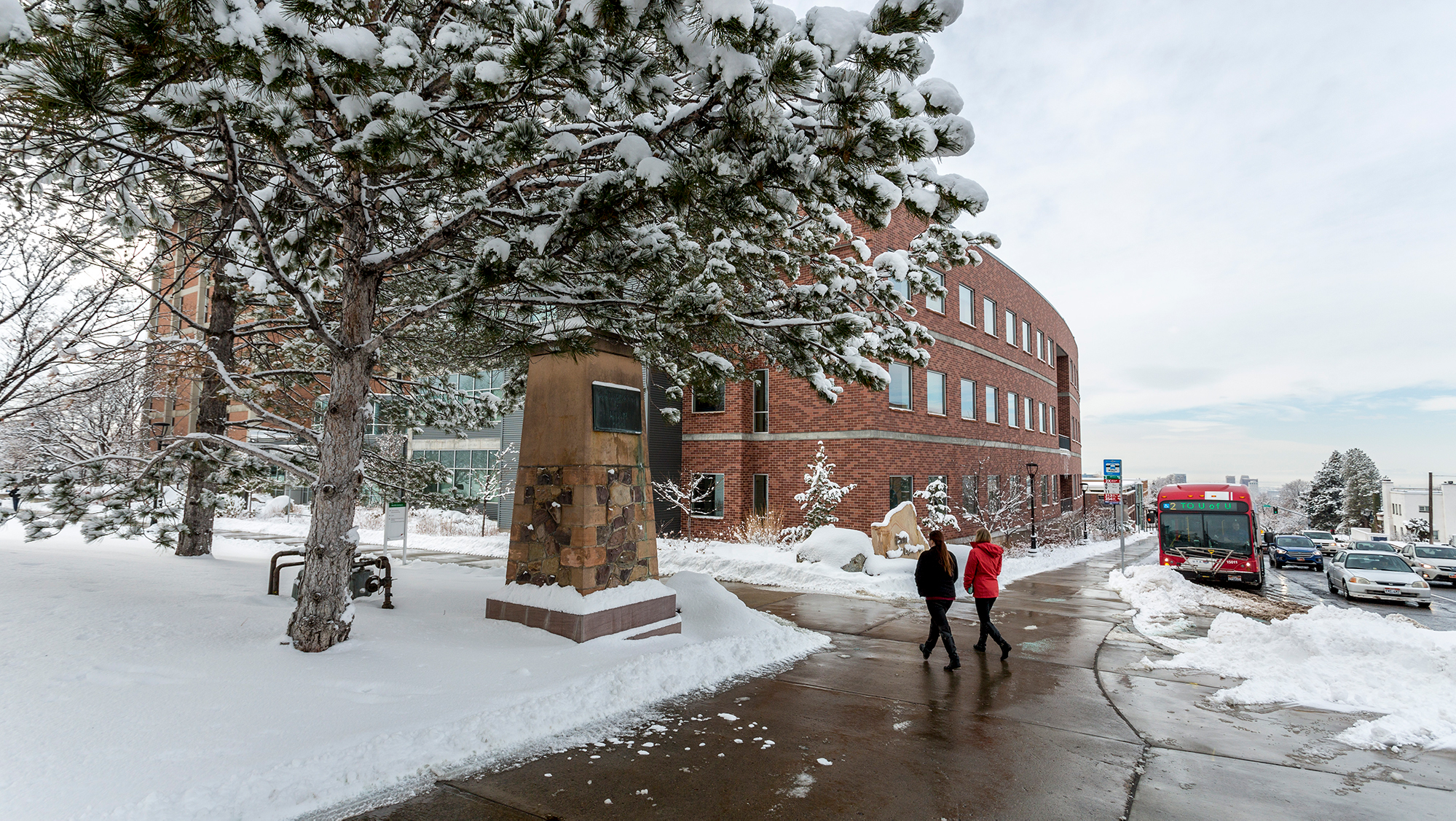
How shifting your commute can add to the journey (and clear our air)
By Kate Whitbeck, Communications, Sustainability Office
We have all heard of slow food and fast fashion, and how we want to seek out the first and avoid the second. What about slow transportation? It’s a concept that suggests getting to your destination as quickly as possible shouldn’t be your primary goal. Your commute can serve many different purposes. Slowing your commute can add to the journey (and clear our air).
Before I started working at the university, I was a slave to my vehicle, racing off each morning to drop my kids at school then driving 25 minutes to my office—which was in a public transit desert—and then racing back to pick up my kids, fitting in a few errands and driving home. I arrived home stressed from dealing with traffic, frustrated that I hadn’t fit in any exercise and anxious that I hadn’t had time to finish my work at the office.
When I started working at the university I had the great fortune to became a regular public transit user. There were a number of factors that made it work: 1) I live within a few miles of the campus; 2) There are at least three bus routes that travel to the U within about 4-5 blocks of my house; and 3) All my children could get to school using the same bus route. It didn’t hurt that my university ID also covered my fare.
Admittedly, for me it does take longer to get from place to place using public transportation. At first, I struggled thinking that this was wasted time that I could spend doing other things until I realized that my commute brought me home at the end of the day without the frustrations of dealing with traffic and had allowed me to fit in my 10,000 steps, connect with my children in a relaxed way and saved me money. This is when I shifted my attitude around my commute and embraced slow transportation.
Slow transportation is about rejecting speed as the objective and reimagining our transition from one place to another as an opportunity to check off other boxes. Your morning commute (in something other than a single-occupant vehicle) can serve as the following:
Exercise Time: Depending on what your commute looks like it can take the place of a trip to the gym. The bus route that runs to the U most frequently is further from my house. It also drops me further from my office. This could be viewed either as an impediment or as an opportunity to get in more steps. Biking or walking to work serve that same purpose.
Work Time: Taking the train and the bus can allow you to put in extra work time. An uninterrupted hour at the beginning and end of the day can allow you to use your time in the office more effectively.
Relaxation Time: Taking TRAX, FrontRunner or the bus allows you to listen to your favorite podcast, catch up on the news, or scroll through social media. If you own a good set of noise-canceling headphones you can turn your transit commute into a meditation session. Doing absolutely nothing but staring out the window and letting your mind wander can also feel incredibly liberating. You arrive feeling refreshed and ready to get to work.
Connection Time: In my case, my commute allows me another 15 minutes of uninterrupted, undistracted time with my children. I am not fighting traffic, thinking about where to park, or battling unsafe road conditions. I get that not everyone’s lives allow for this intersection, but it can allow for connection of a different sort.
Slowing down your commute, especially by walking or biking, allows you to connect to your city and its inhabitants in a new way. When you walk the last few blocks to your destination you notice things that you wouldn’t see when whizzing by in a car. You notice the new businesses that have opened, those that have shut down. You notice that the neighbor two blocks away painted their house blue. You begin to recognize other slow commuters. You interact with strangers giving directions or chatting at the bus stop. These interactions help us feel grounded and connected to our community.
Sometimes I think we weren’t meant to move so quickly from one place to the next. When we are dependent on our own two feet to get places, we are far from the fastest species on the planet. For the majority of the millennia our species has inhabited this planet it took time to get from one place to another, enough time to mentally transition so that when we arrived at our destination we were present in a different way. Maybe we haven’t yet evolved to travel so quickly from one place to another. Maybe we all need to try a little slow transportation.
Throughout February, consider slowing your commute. Take action on air quality by tracking your commute behaviors with the Clear the Air Challenge, a statewide competition that aims to reduce emissions from vehicles by promoting alternative transit options. Join the U team at travelwisetracker.com/s/university-of-utah.
Mark your calendar for Winter Bike to Work Day – February 13th, 4-6 pm. Cyclists are invited to stop by our two pop-up locations on Guardsman Way and the Legacy Bridge for hot drinks and free resources on their commute home.
